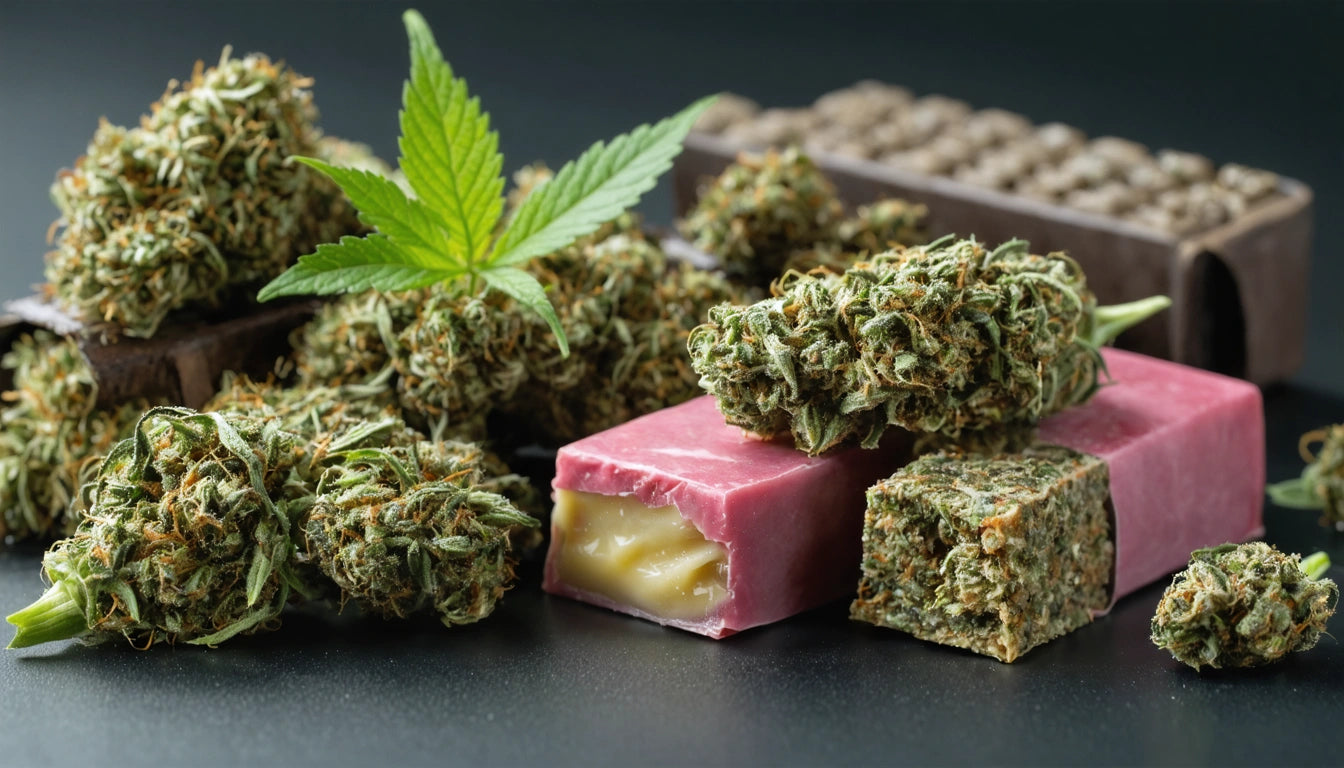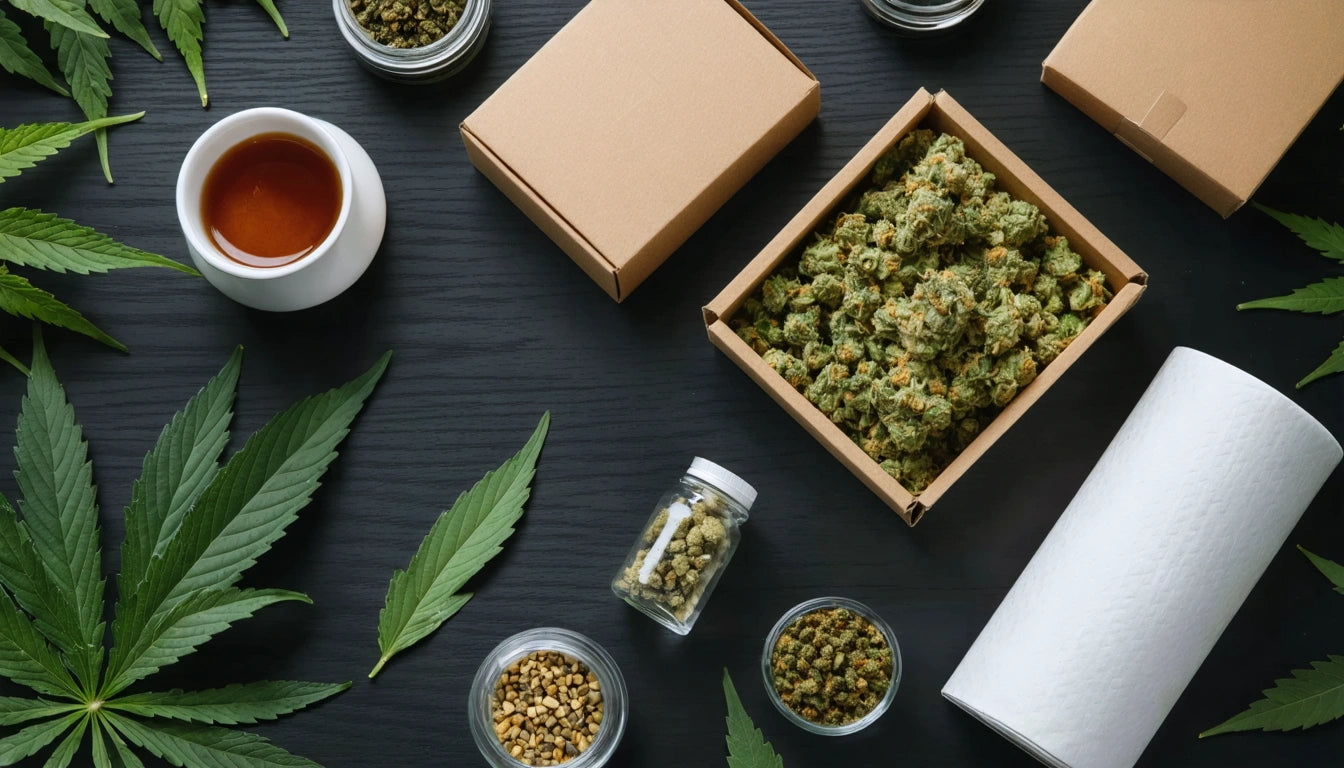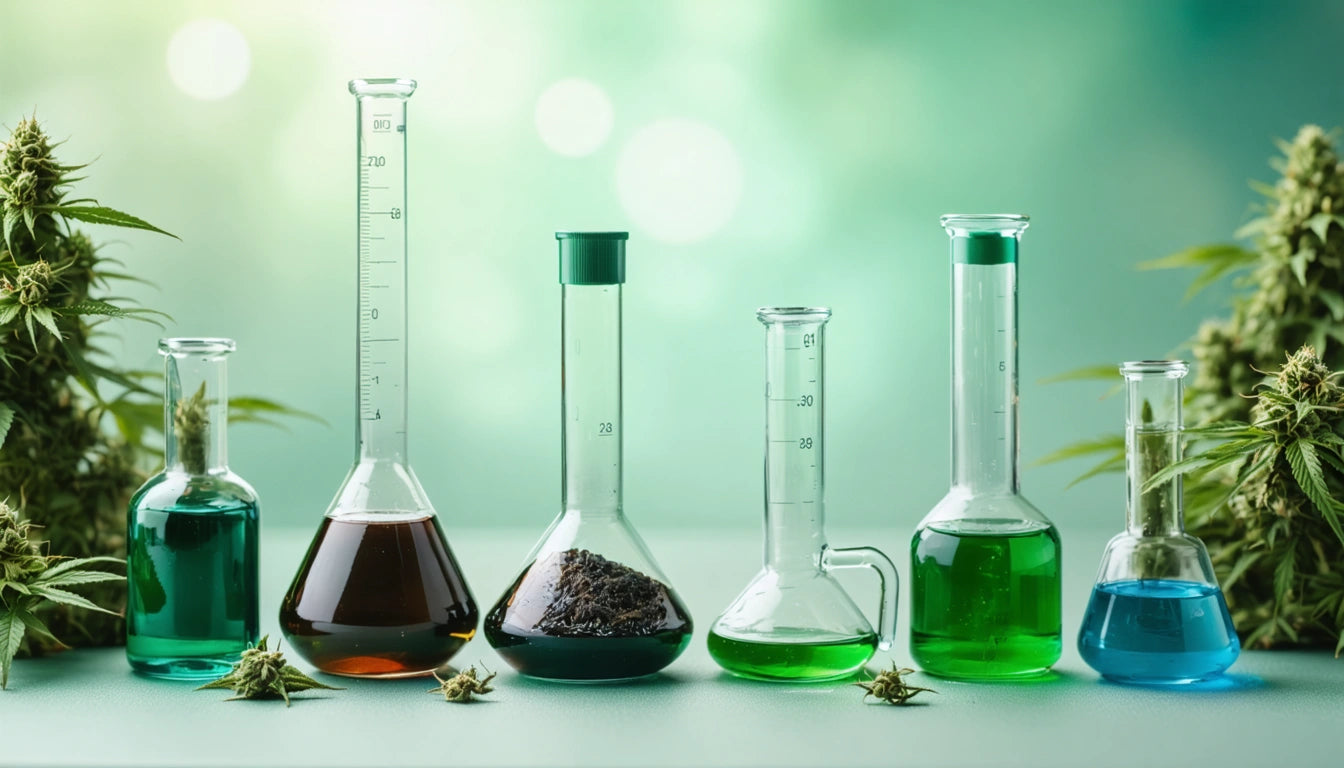Table of Contents
Cannabis edibles present unique preservation challenges that require specialized packaging solutions. Unlike traditional food products, cannabis-infused items contain cannabinoids and terpenes that degrade when exposed to oxygen, light, moisture, and temperature fluctuations. Effective packaging not only maintains product freshness but also preserves potency, flavor profiles, and regulatory compliance throughout the distribution chain.
Shelf Life Challenges for Cannabis Edibles
Cannabis edibles face multiple degradation factors that can significantly reduce their shelf life. THC and other cannabinoids oxidize when exposed to air, converting to less potent compounds. Additionally, moisture migration can lead to texture changes, while light exposure accelerates cannabinoid breakdown and may promote microbial growth.
According to industry research on shelf life extension, properly designed packaging can extend product viability from weeks to months, providing significant value to both manufacturers and consumers.
Barrier Materials and Technologies
Oxygen Barriers
Oxygen barrier films and containers prevent cannabinoid oxidation, which directly affects potency. High-barrier materials like EVOH (ethylene vinyl alcohol) and metalized films create an oxygen-impermeable environment that maintains product integrity. Some manufacturers incorporate oxygen absorbers or scavengers within packaging to further reduce oxygen exposure.
Multi-Layer Protection
Advanced packaging often features multiple material layers, each serving a specific protective function. For example, a typical high-performance pouch might include:
- Outer layer for printing and structural integrity
- Middle barrier layer for oxygen and moisture protection
- Inner food-grade layer for product contact safety
These multi-layer solutions provide comprehensive protection while meeting compliance requirements for food safety and cannabis regulations.
Moisture Control Solutions
Moisture management is critical for preserving texture and preventing microbial growth in cannabis edibles. Desiccant packs, humidity control systems, and moisture-resistant materials help maintain optimal water activity levels. For gummies and other sugar-based products, preventing crystallization and texture changes requires specialized moisture barriers.
Research on gummy and chocolate packaging indicates that products in moisture-controlled environments maintain consistent texture and potency up to three times longer than those in standard packaging.
Light Protection Strategies
Light exposure, particularly UV light, accelerates cannabinoid degradation. Opaque packaging solutions block harmful light waves while preserving brand aesthetics. Amber, black, and metalized materials offer superior light protection compared to clear or translucent options.
Many manufacturers balance light protection with consumer desire to see products by incorporating small windows with UV-filtering properties or using secondary packaging that allows for product visibility at the point of sale but provides protection during storage.
Temperature Considerations for Extended Freshness
Temperature fluctuations can dramatically impact edible quality and potency. While packaging alone cannot control storage temperature, certain materials perform better across temperature ranges. For products requiring refrigeration, cold-chain compatible packaging prevents condensation issues and maintains barrier properties in humid environments.
Insulated packaging options can help buffer against short-term temperature changes during distribution, providing an additional layer of protection for sensitive formulations.
Compliance Requirements for Preservation Packaging
Extended shelf life packaging must balance preservation technologies with regulatory compliance. Child-resistant features are mandatory for cannabis edibles in most markets. Federal guidelines for special packaging require designs that are difficult for children under five to open while remaining accessible to adults, similar to requirements for pharmaceuticals and household chemicals.
Additionally, packaging must accommodate required labeling elements while maintaining barrier properties. Labeling requirements for cannabis edibles include dosage information, ingredients, allergens, and warning statements that must remain legible throughout the product's shelf life.
Future Innovations in Edible Preservation Technology
The cannabis packaging industry continues to develop new preservation technologies. Smart packaging with time-temperature indicators allows consumers and retailers to monitor product freshness. Antimicrobial films inhibit bacterial growth, while nanotechnology-enhanced materials provide superior barrier properties without added bulk.
Sustainability remains a key consideration, with biodegradable barrier materials emerging as alternatives to traditional plastics. Sustainable packaging options that maintain preservation properties represent the industry's next significant challenge.
As the cannabis edibles market matures, packaging that extends shelf life while meeting regulatory requirements will become increasingly sophisticated, balancing preservation technology with brand identity, sustainability goals, and consumer experience.











Leave a comment
All comments are moderated before being published.
This site is protected by hCaptcha and the hCaptcha Privacy Policy and Terms of Service apply.